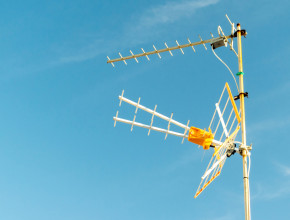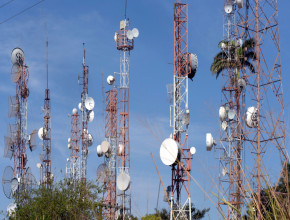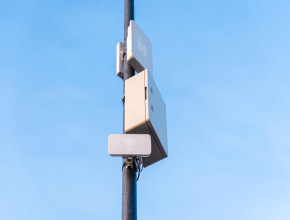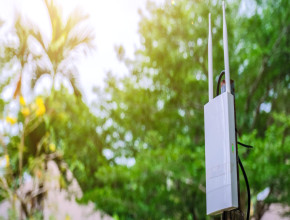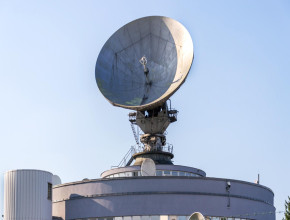
A wireless antenna is used mainly in a radio communication system that receives or gives radio frequency energy. These antennas are connected with the help of a low-loss coaxial cable to a filter or amplifier.
Wireless antennas work between 2400MHz and 5000MHz. They come in different types such as omnidirectional antennas, directional antennas, and semi-directional antennas.
In this blog, we will cover everything related to Wireless antennae, its features, benefits, design, and various types of Wireless antennas.
How Does An Antenna Work in Different Wireless Tools?
Wireless devices such as smartphones, tablets, laptops, and wireless routers contain receiving and transmitting antennas that convert electric to EM waves and EM waves into electric signals.
The main source of signals is the transmitter and the destination is the receiver. The transmitter antenna gets an electric current that causes the electrons to oscillate. Electromagnetic radiation is generated by these electron vibrations and travels in the form of radio waves. These waves cause the vibration of electrons in the receiving antenna. The original signal is recreated by a current flow created by this.
How Do Wi-Fi Antennas Work?
Different kinds of antennas work over a range of different frequencies. Antennas have different heights to accommodate effective radiation and reception in the frequencies. The frequency range for Wi-Fi communication is between 2.4 GHz and 5 GHz. The wavelength is determined by the frequency with the help of a formula.
The length of an antenna is inversely proportional to frequency. It is directly proportional to the wavelength. In the case of higher frequencies, the wavelength is lower and the antenna height is shorter. The radiation pattern of an antenna is influenced by a design.
The transmission power of the antenna strengthens the network that the antenna transmits. Antenna power levels must be sufficient to give a high-speed network with the required exposure and range.
An antenna with a frequency of 2.4 GHz must have a transmission power of 100mW for a good speed as well as a broad range.
Types of Wireless Antennas
Now, let us discuss the various kinds of wireless antennas in this section. The different kinds of antennas differ according to the diameter of the region by which the reception of the signal strength. This diameter is called the beam width. The beam width of these antennas is different, and the design, radio frequency, and orientation also differ in every antenna.
1. Semi-Directional Antenna
As the name tells, a semi-directional antenna radiates the signals in a single direction for communication from one place to another. These antennas can connect both indoor and outdoor communication for small and large distances. Semi-directional antennas are generally used in corridors, hallways, PTP and PTMP bridging, and wireless ISPs as they all require directional coverage.
These antennas can be used to gain 360-degree coverage by placing multiple antennas in an array. Semi-directional antennas come in 3 kinds based on structure and design.
-
Panel Antenna
Panel antennas have a wider beam than other kinds of antennas. It also gives a larger coverage than other kinds of wireless antennas. This antenna performs only one task either receiving the signals or sending the signals.
-
Patch Antenna
A patch antenna is an assembled antenna and can take any shape as per the requirement. It can be customized according to the need and requirement and is used in PCBs often.
-
Yagi Antenna
The third kind of semi-directional antenna is a high gain Yagi antenna. It is normally used in TV dishes where a single-frequency application is required.
2. Omni Directional antenna
An Omni Directional Antenna can emit signals in all directions at an equal radial distance. This antenna has a simple design and is also known as a rod antenna. It is mainly used in homes because of its particular shape. It can cover all directions and can also be used in large offices and commercial centers.
This antenna can work well even with different radiation shapes. The general range of an Omni Directional Antenna is shown in dBi. The range will increase with the higher number of dBi. It comes in various kinds of models. Most homes use comprised mobile apps and compact models.
In addition, the omni-directional antennas can be used in both TV and radio. Some of the most common kinds of omnidirectional antennas include dipole antennas, GPS antennas, TV antennas, quad antennas, and radio antennas.
3. Highly directional antenna
The third type of wireless antenna is a highly directional antenna. It is mainly used to direct signals from one place to another. These antennas usually contain a narrow beam with a high focus because of which they reach larger distances. This antenna is mainly used in outdoor applications such as commercial buildings, office zones, and business areas.
The highly directional antenna comes in 2 kinds such as:
-
Grid Antenna
As the name tells, this antenna includes a grid-like structure that allows air to pass so that the signals do not travel elsewhere during the heavy winds. These antennas are mainly used in indoor areas.
-
Parabolic dish Antenna
Parabolic Dish Antenna has short side lobes, a high front-back ratio, and acute radiation angles. This antenna is the most powerful type of directional antenna used at larger distances.
Final words
Wireless communication involves the use of many other types of antennas such as helical antennae, phased array antennae, horn antennae, folded dipole antennae, log periodic antennae, ground plane antennae, dielectric antennae, and slot antennae.
These days, a Smart Antenna is often used in wireless communication. It gives many benefits in communication such as a wider range of operations and an increase in the number of users. Besides, a smart antenna also provides a high level of security and does not allow signals to travel in all directions.
Smart antennas decrease interference and stop the signals to radiate in multiple locations. You will get precise communication on smartphones and tablets. This was all about a wireless antenna and its different kinds. If you have any other information about wireless antennae, do share it here.

